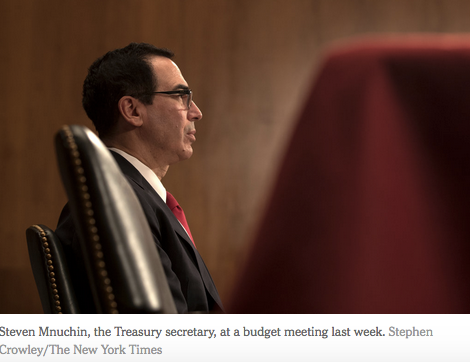An increase in Treasury interest rates of just 0.2 percent a year would cost the government about $400 billion over the next 10 years. It also would lead to higher borrowing costs for American businesses, because borrowing rates are set by reference to Treasury rates. Moreover, each month holders of tens of billions of dollars in valid claims against the United States would go unpaid, triggering a major recession.
None of this is particularly speculative; almost all economists and policy makers agree on the enormous fiscal, economic and reputational costs of default. That’s why, in the past, we’ve always managed to avoid it. What’s different in 2017?
First, the administration is confounded by inexperience, incompetence and infighting. Treasury Secretary Steven Mnuchin has little expertise in congressional stage management, but he understands the gravity of the situation and has lobbied for a clean debt ceiling bill — one without conditions or unnecessary amendments.
But that puts him in tension with his White House colleague Mick Mulvaney, the director of the Office of Management and Budget and a founding member of the Freedom Caucus, who has intimated that breaching the debt ceiling would not be that consequential, and who has argued that the must-pass legislation should be used to advance the hard right’s agenda. Without a firm signal from the White House that the debt ceiling should not be held hostage to political agendas, it will be hard to get Congress to do the right thing.




